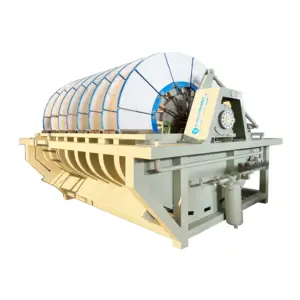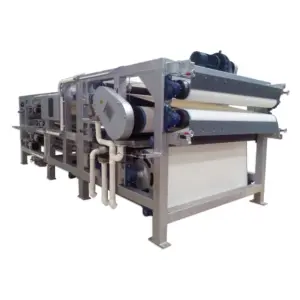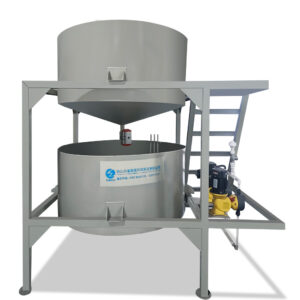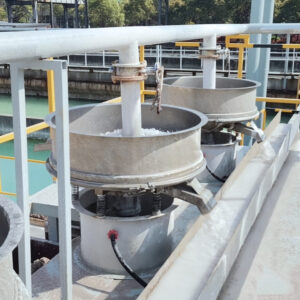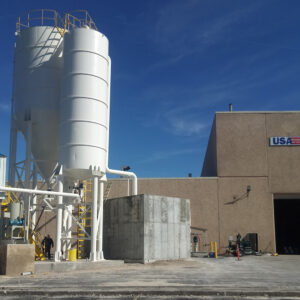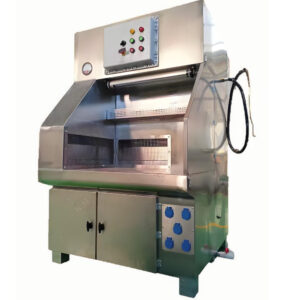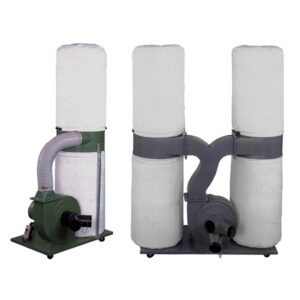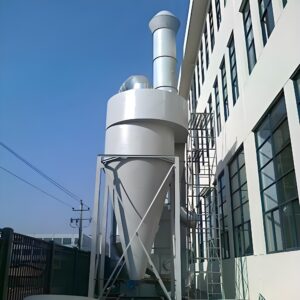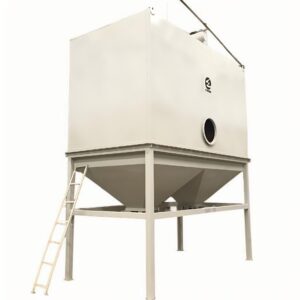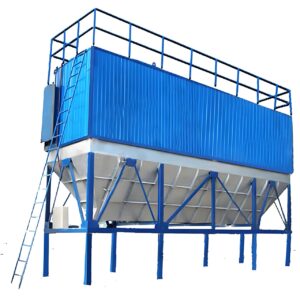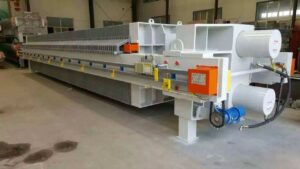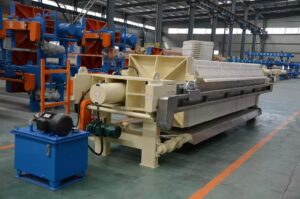In the world of industrial hygiene and workplace safety, the American Conference of Governmental Industrial Hygienists (ACGIH) plays a pivotal role in setting standards and recommendations for various safety equipment and practices. One such critical piece of equipment is the downdraft table, an essential tool for controlling airborne contaminants in many industrial settings. ACGIH recommendations for downdraft tables have become the gold standard for ensuring optimal performance and worker safety.
Downdraft tables are designed to capture and remove harmful particles, fumes, and vapors generated during various industrial processes. These tables use a downward airflow to draw contaminants away from the worker's breathing zone, effectively reducing exposure to hazardous substances. The ACGIH's guidelines for downdraft tables cover a range of aspects, including design specifications, airflow requirements, maintenance procedures, and performance testing protocols.
As we delve deeper into the world of ACGIH recommendations for downdraft tables, we'll explore the key elements that make these guidelines so crucial for workplace safety. From understanding the basic principles of downdraft table operation to examining specific recommendations for different industrial applications, this article will provide a comprehensive overview of best practices in downdraft table usage and maintenance.
The ACGIH recommendations for downdraft tables are designed to ensure optimal capture efficiency and minimize worker exposure to airborne contaminants, thereby promoting a safer and healthier work environment.
What are the key components of an effective downdraft table according to ACGIH?
When it comes to downdraft tables, the ACGIH emphasizes the importance of proper design and construction to achieve optimal performance. The key components of an effective downdraft table, as recommended by ACGIH, work in harmony to create a safe and efficient system for capturing and removing airborne contaminants.
These components typically include a work surface with perforations or slots, a plenum chamber beneath the work surface, and a powerful exhaust system. The design of these elements is crucial for creating the necessary downdraft airflow that captures contaminants effectively.
According to ACGIH guidelines, the work surface should be designed to provide uniform airflow across its entire area. The size and spacing of perforations or slots are critical factors in achieving this. The plenum chamber beneath the work surface should be engineered to distribute the suction evenly, while the exhaust system must be powerful enough to maintain the required capture velocity.
ACGIH recommends that downdraft tables should be designed to maintain a minimum capture velocity of 100-200 feet per minute (fpm) at the point of contaminant generation, depending on the specific application and nature of the contaminants.
Here's a small table summarizing the key components and their functions in an ACGIH-compliant downdraft table:
| Component | Function |
|---|---|
| Perforated Work Surface | Allows airflow to draw contaminants downward |
| Plenum Chamber | Distributes suction evenly across the work surface |
| Exhaust System | Provides the necessary airflow for contaminant capture |
| Filtration System | Removes contaminants from the air before discharge |
In conclusion, the effectiveness of a downdraft table relies heavily on the proper design and integration of these key components. By adhering to ACGIH recommendations, manufacturers and users can ensure that their downdraft tables provide optimal protection against airborne contaminants in the workplace.
How does ACGIH recommend sizing a downdraft table for optimal performance?
Proper sizing of a downdraft table is crucial for its effective operation, and ACGIH provides specific recommendations to ensure optimal performance. The size of the downdraft table should be determined based on the nature of the work being performed, the size of the workpieces, and the types of contaminants being generated.
ACGIH guidelines suggest that the table surface should extend at least 6 inches beyond the edge of the workpiece in all directions. This overhang helps to ensure that all contaminants are captured, even when working near the edges of the table. Additionally, the overall size of the table should be large enough to accommodate the largest workpiece while still maintaining the recommended capture velocities.
When it comes to airflow requirements, ACGIH recommends calculating the necessary exhaust volume based on the table's dimensions and the required capture velocity. This calculation ensures that the downdraft table can maintain effective contaminant capture across its entire surface.
ACGIH recommends that the exhaust volume for a downdraft table should be calculated using the formula: Q = V x A, where Q is the exhaust volume in cubic feet per minute (cfm), V is the desired capture velocity in feet per minute (fpm), and A is the area of the table in square feet.
Here's a small table illustrating example sizing recommendations for downdraft tables based on ACGIH guidelines:
| Table Size (ft) | Minimum Exhaust Volume (cfm) | Recommended Capture Velocity (fpm) |
|---|---|---|
| 2 x 3 | 600 – 1200 | 100 – 200 |
| 3 x 4 | 1200 – 2400 | 100 – 200 |
| 4 x 6 | 2400 – 4800 | 100 – 200 |
In conclusion, proper sizing of a downdraft table is essential for maintaining effective contaminant capture. By following ACGIH recommendations for table dimensions and exhaust volume calculations, users can ensure that their downdraft tables provide optimal protection against airborne hazards in the workplace.
What are the ACGIH guidelines for downdraft table maintenance and testing?
Maintaining and regularly testing downdraft tables is crucial for ensuring their continued effectiveness in controlling airborne contaminants. ACGIH provides comprehensive guidelines for the maintenance and testing of downdraft tables to help users keep their equipment in optimal working condition.
Regular maintenance, as recommended by ACGIH, typically includes cleaning the work surface, inspecting and cleaning the plenum chamber, and checking the filtration system. These routine tasks help prevent the buildup of contaminants that could impair the table's performance.
ACGIH also emphasizes the importance of periodic performance testing to verify that the downdraft table is operating within the recommended parameters. This testing typically involves measuring capture velocities across the work surface and checking the overall exhaust volume.
ACGIH recommends that downdraft tables should undergo performance testing at least annually, with more frequent testing for tables used in high-risk applications or those subject to heavy use.
Here's a small table summarizing key ACGIH recommendations for downdraft table maintenance and testing:
| Task | Frequency | Description |
|---|---|---|
| Visual Inspection | Daily | Check for visible damage or blockages |
| Surface Cleaning | Weekly | Clean work surface and plenum chamber |
| Filter Inspection | Monthly | Check and replace filters as needed |
| Performance Testing | Annually | Measure capture velocities and exhaust volume |
In conclusion, adhering to ACGIH guidelines for maintenance and testing is essential for ensuring the long-term effectiveness of downdraft tables. Regular upkeep and performance verification help maintain optimal contaminant capture and contribute to a safer work environment. Users of PORVOO downdraft tables can benefit from following these ACGIH recommendations to maximize the performance and longevity of their equipment.
How do ACGIH recommendations address different types of contaminants in downdraft table applications?
ACGIH recommendations for downdraft tables take into account the diverse range of contaminants that may be encountered in various industrial settings. These guidelines provide specific advice for dealing with different types of particles, fumes, and vapors, recognizing that each type of contaminant may require a slightly different approach for effective capture and removal.
For particulate contaminants, such as dust and metal shavings, ACGIH recommends designing downdraft tables with appropriate filtration systems. The type and efficiency of filters should be selected based on the size and nature of the particles being captured.
When it comes to fumes and vapors, ACGIH guidelines emphasize the importance of maintaining higher capture velocities and potentially incorporating additional control measures, such as enclosures or secondary ventilation systems.
ACGIH recommends that for particularly hazardous contaminants, such as those with low exposure limits or high toxicity, downdraft tables should be designed to achieve capture velocities at the higher end of the recommended range, typically 150-200 fpm.
Here's a small table summarizing ACGIH recommendations for different types of contaminants:
| Contaminant Type | Recommended Capture Velocity (fpm) | Additional Considerations |
|---|---|---|
| Coarse Particles | 100-150 | Robust filtration system |
| Fine Particles | 150-200 | High-efficiency filters |
| Fumes and Vapors | 150-200 | Possible enclosure or secondary ventilation |
| Highly Toxic | 200+ | Enhanced controls and monitoring |
In conclusion, ACGIH recommendations provide a nuanced approach to addressing different types of contaminants in downdraft table applications. By tailoring the design and operation of downdraft tables to the specific contaminants being handled, users can ensure optimal protection for workers across a wide range of industrial processes.
What are the ACGIH recommendations for integrating downdraft tables with other ventilation systems?
ACGIH recognizes that downdraft tables often function as part of a larger ventilation strategy within industrial facilities. Their recommendations address the integration of downdraft tables with other ventilation systems to create a comprehensive approach to air quality management.
When integrating downdraft tables with other ventilation systems, ACGIH emphasizes the importance of maintaining proper air balance. This means ensuring that the operation of the downdraft table does not negatively impact the performance of other local exhaust ventilation systems or the overall building ventilation.
ACGIH guidelines also cover the coordination of multiple downdraft tables within the same space. They provide recommendations for spacing and airflow management to prevent interference between tables and maintain effective contaminant capture for each workstation.
ACGIH recommends that when multiple downdraft tables are used in the same area, they should be spaced at least 3 feet apart to prevent interference and maintain optimal capture efficiency for each table.
Here's a small table summarizing key considerations for integrating downdraft tables with other ventilation systems:
| Aspect | Recommendation |
|---|---|
| Air Balance | Ensure downdraft table operation doesn't disrupt other systems |
| Makeup Air | Provide adequate makeup air to replace exhausted air |
| System Coordination | Coordinate operation with other local exhaust systems |
| Table Spacing | Maintain minimum 3-foot spacing between tables |
In conclusion, effective integration of downdraft tables with other ventilation systems is crucial for maintaining overall air quality in industrial settings. By following ACGIH recommendations for system coordination and air balance, users can create a comprehensive ventilation strategy that maximizes the benefits of downdraft tables while ensuring optimal performance of all air quality control measures.
How do ACGIH recommendations address energy efficiency in downdraft table design and operation?
In recent years, ACGIH has increasingly focused on energy efficiency in its recommendations for downdraft tables. While maintaining effective contaminant capture remains the primary goal, the organization recognizes the importance of optimizing energy use in industrial ventilation systems.
ACGIH guidelines for energy-efficient downdraft tables include recommendations for variable speed drives, automatic shut-off systems, and optimized airflow designs. These features allow for adjustable operation based on actual usage, reducing energy consumption during periods of low activity.
The organization also emphasizes the importance of proper table sizing and airflow calculations to prevent over-ventilation, which can lead to unnecessary energy use. By following ACGIH recommendations for precise sizing and airflow management, users can ensure their downdraft tables operate at peak efficiency.
ACGIH recommends the use of variable frequency drives (VFDs) in downdraft table exhaust systems, which can reduce energy consumption by up to 50% compared to constant-speed systems, while still maintaining effective contaminant capture.
Here's a small table summarizing ACGIH recommendations for energy efficiency in downdraft tables:
| Feature | Energy Saving Potential |
|---|---|
| Variable Speed Drives | Up to 50% |
| Automatic Shut-off | 10-20% |
| Optimized Airflow Design | 15-30% |
| Proper Sizing | 10-25% |
In conclusion, ACGIH recommendations for energy efficiency in downdraft tables provide a balanced approach to maintaining effective contaminant control while minimizing energy consumption. By implementing these energy-saving features and following ACGIH guidelines for proper sizing and operation, users can significantly reduce the environmental impact and operating costs of their downdraft table systems.
What are the ACGIH recommendations for worker training and safe use of downdraft tables?
ACGIH places significant emphasis on worker training and safe operating practices as crucial components of effective downdraft table use. Their recommendations cover a range of topics to ensure that workers understand how to properly use and maintain these important safety devices.
Key areas of worker training, as recommended by ACGIH, include understanding the principles of downdraft table operation, recognizing signs of system malfunction, and proper positioning of work pieces for optimal contaminant capture. ACGIH also stresses the importance of training workers on the specific hazards associated with the materials they are working with and the role of downdraft tables in mitigating these risks.
Safe use practices recommended by ACGIH include regular inspection of the downdraft table before use, proper adjustment of airflow controls, and maintaining a clean work surface. The organization also provides guidelines for personal protective equipment (PPE) that should be used in conjunction with downdraft tables for maximum safety.
ACGIH recommends that all workers using downdraft tables should receive comprehensive training on their operation and maintenance, with refresher training provided at least annually or whenever significant changes are made to the equipment or processes.
Here's a small table summarizing key elements of ACGIH-recommended worker training for downdraft table use:
| Training Element | Description |
|---|---|
| Operational Principles | Understanding how downdraft tables work |
| Hazard Recognition | Identifying potential risks and system malfunctions |
| Proper Use Techniques | Correct positioning of work pieces and airflow adjustment |
| Maintenance Procedures | Basic cleaning and inspection tasks |
| Emergency Procedures | Actions to take in case of system failure or accidents |
In conclusion, comprehensive worker training and adherence to safe use practices are essential components of effective downdraft table implementation. By following ACGIH recommendations for training and safe operation, employers can ensure that their workers are well-equipped to maximize the safety benefits of downdraft tables in the workplace.
As we conclude our exploration of ACGIH recommendations for downdraft tables, it's clear that these guidelines provide a comprehensive framework for the design, operation, and maintenance of these crucial safety devices. From key components and proper sizing to maintenance protocols and energy efficiency considerations, ACGIH recommendations cover every aspect of downdraft table use in industrial settings.
By adhering to these guidelines, employers can ensure that their downdraft tables provide optimal protection against airborne contaminants, contributing to a safer and healthier work environment. The emphasis on worker training and safe use practices further underscores the importance of a holistic approach to workplace safety.
As industrial processes continue to evolve, ACGIH recommendations for downdraft tables will likely adapt to address new challenges and incorporate emerging technologies. Staying informed about these updates and implementing them in your workplace is crucial for maintaining the highest standards of safety and efficiency.
Whether you're selecting a new downdraft table or looking to optimize your existing equipment, considering ACGIH recommendations is essential. Products like the ACGIH recommendations for downdraft tables offered by industry leaders are designed with these guidelines in mind, providing a reliable solution for controlling airborne contaminants in various industrial applications.
By prioritizing the implementation of ACGIH recommendations for downdraft tables, businesses can not only protect their workers but also improve productivity, reduce energy costs, and demonstrate their commitment to workplace safety and environmental responsibility.
External Resources
CDC – Noise and Metal Exposure Assessment – This report includes an evaluation of a downdraft table, discussing its designed capture velocities and the importance of using the correct type of dust it was designed for, as per ACGIH recommendations.
NIH – Local Exhaust Ventilation Testing Protocols – This document outlines the performance testing criteria for downdraft tables, including protocols established by the American Conference of Governmental and Industrial Hygienists (ACGIH), and the frequency of testing.
ACGIH Industrial Ventilation Manual – The ACGIH Industrial Ventilation Manual provides comprehensive guidelines for the design, installation, and testing of local exhaust ventilation systems, including downdraft tables.
OSHA Ventilation Standards – While not directly referencing ACGIH, this resource covers OSHA standards that often align with ACGIH recommendations for downdraft tables in industrial settings.
NIH – Downdraft Tables for Small Animal Surgery – This section of the NIH document focuses on the specific use of downdraft tables in small animal surgery, highlighting the performance testing and certification criteria based on ACGIH guidelines.
ACGIH Threshold Limit Values and Biological Exposure Indices – This publication includes the latest TLVs and BEIs, which can be relevant for understanding the broader context of workplace exposure limits, including those related to the use of downdraft tables.
